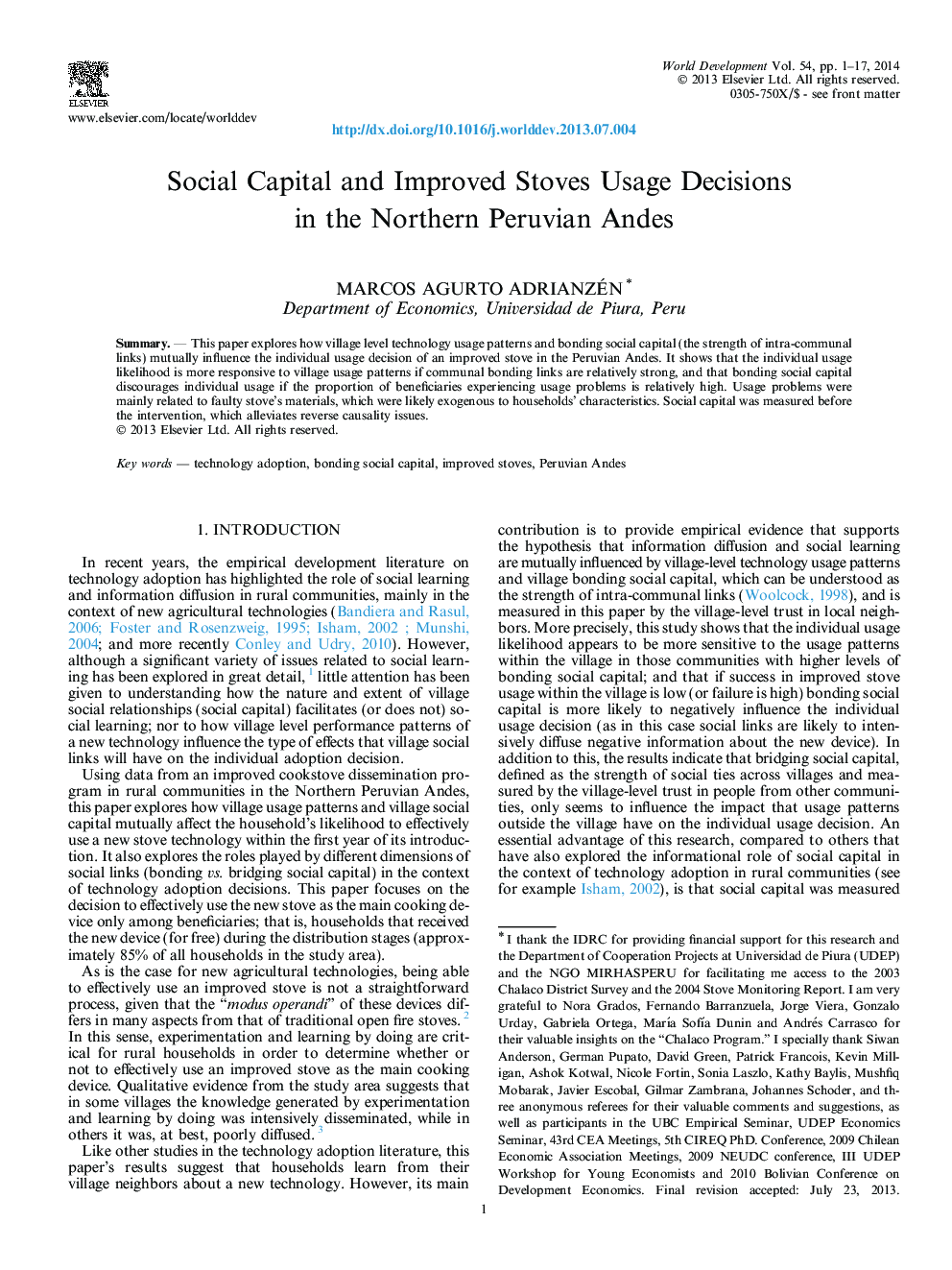| Article ID | Journal | Published Year | Pages | File Type |
|---|---|---|---|---|
| 7395216 | World Development | 2014 | 17 Pages |
Abstract
This paper explores how village level technology usage patterns and bonding social capital (the strength of intra-communal links) mutually influence the individual usage decision of an improved stove in the Peruvian Andes. It shows that the individual usage likelihood is more responsive to village usage patterns if communal bonding links are relatively strong, and that bonding social capital discourages individual usage if the proportion of beneficiaries experiencing usage problems is relatively high. Usage problems were mainly related to faulty stove's materials, which were likely exogenous to households' characteristics. Social capital was measured before the intervention, which alleviates reverse causality issues.
Related Topics
Social Sciences and Humanities
Economics, Econometrics and Finance
Economics and Econometrics
Authors
Marcos Agurto Adrianzén,
